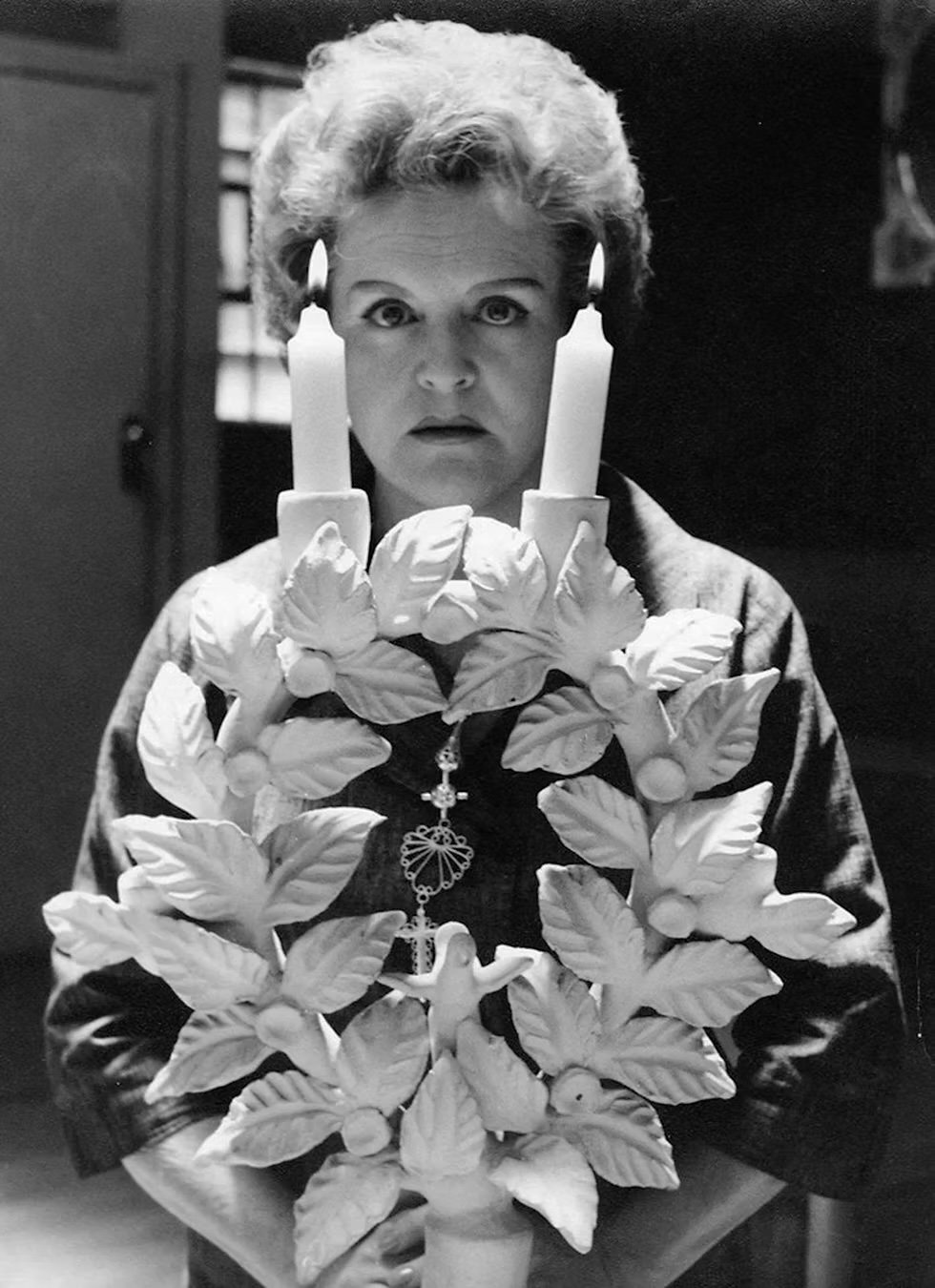Gender and visual arts
The second module of this exhibit shifts focus to the contributions of Mexican women artists, whose engagement with esotericism diverged significantly from the monumental and nationalistic tendencies of their male contemporaries. While muralists such as Diego Rivera and José Clemente Orozco developed state-sponsored projects that intertwined esoteric imaginary with masculine visions of collective identity and historical destiny, women artists like María Izquierdo, Cordelia Urueta, and Sofía Bassi developed a more intimate and introspective approach to spirituality. Rather than emphasizing overt pre-Hispanic motifs or heroic male figures, their works explore esoteric themes through personal, mystical, and psychological lenses.
María Izquierdo was a prolific artist, holding over 20 solo exhibitions and producing an estimated 500 paintings. She was also the first Mexican woman to exhibit her work in the United States. During her 1930 exhibition at the Art Center in New York, she became involved with members of the Delphic Society, a space frequented by Theosophists, artists, and nationalists. Influenced by the Russian esoteric author Peter Ouspensky and his theories of the “fourth dimension,” Izquierdo explored higher planes of perception and consciousness in her paintings. These ideas informed her symbolic depictions of women subjected to celestial forces—often coded as masculine—thus blending spiritual inquiry with critiques of gendered power structures.
Despite her artistic success, Izquierdo faced institutional resistance that exposed the deep gender bias of the post-revolutionary cultural establishment. In 1945, she became the first woman to be officially commissioned to paint a mural in a government building. However, under pressure from leading muralists Rivera and Siqueiros, the commission was revoked. Izquierdo denounced this exclusion in a public statement, famously declaring that “it is a crime to be a talented woman.” This episode, emblematic of the systemic barriers faced by women artists, underscores the tension between revolutionary ideals of equality and the patriarchal structures that continued to shape artistic institutions.
Cordelia Urueta, known as “the lady of Mexican abstract art,” was mentored in her youth by her uncle-in-law, Gerardo Murillo, or “Dr. Atl,” a pivotal figure in Mexican muralism and an artist associated with occultists like Arnold Krumm-Heller. Like Izquierdo, Urueta was exposed to Theosophy during her time with the Delphic Society in New York in 1930. This influence is evident in her metaphysical self-portraits, which follow a distinctly Theosophical aesthetic, as well as in her later abstract works, where expressive color and form are mobilized to convey spiritual vision.
Sofía Bassi, a later contemporary of María Izquierdo and Cordelia Urueta, shared their fascination with esoteric and surrealist themes, though her work was more deeply rooted in alchemical symbolism. Her paintings often depict spectral figures, labyrinthine castles, and egg-shaped vessels drifting through otherworldly landscapes—images that reflect her belief in art as a vehicle for spiritual transformation. Her life was marked by a five-year imprisonment for the murder of her son-in-law, a period during which she redefined her artistic practice as a form of alchemy. One of her most enigmatic works is the Ovosarcófago (Ovosarcophagus), a sculptural egg-shaped coffin she worked on for ten years and in which she was eventually laid to rest—an object that encapsulates her vision of death as a journey into other dimensions of being.
Izquierdo, Urueta, and Bassi articulated an esoteric aesthetic that departed from the monumentalism of state-sponsored muralism, offering instead deeply personal explorations of the self. Their limited recognition reveals how deeply gender bias was embedded in the artistic institutions and ideological frameworks of modern Mexico. In recent years, however, their work has been the subject of growing reassessment, both nationally and internationally. This module highlights their innovative use of esoteric ideas not only to reassert their place within Mexican modern art, but also to contribute to the broader recognition of their legacy.
-

Cordelia Urueta
(1908–1995) Mexican Painter
(Portrait by Kati Horna) -

Maria Izquierdo
(1902–1955) Mexican Painter
-

Sofía Bassi
(1913-1998) Mexican Painter and Writer
(Portrait by Kati Horna)